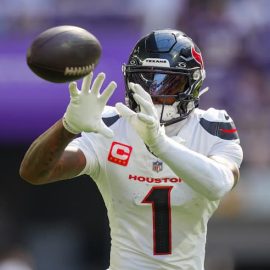In the last year, there has been a sharp drop in the number of Brazilian players in the five major European leagues (England, Spain, Italy, Germany and France). Though Brazil remains the most represented nation among expatriates, the number of footballers from this country has fallen by 24 between the 2008/09 and 2009/10 seasons, decreasing from 163 to 139.
On the other hand, the presence of Argentinean players has seen a strong increase, going up from 103 to 120. The third country exporting the most footballers to the top championships is France, with 106 players in the four other major European leagues, six more than the previous season.
Globally, the level of expatriates has remained stable between 2008/09 and 2009/10. The 98 clubs of the top championships are made up on average of 42.6% of expatriate footballers, players having grown up outside of the country where they play.
England is by far the country where clubs import the most footballers: expatriates represent 59.8% of squads (+0.5%). The level of expatriates is also particularly high in Germany (47.4%), though it has dropped in comparison to the previous season (-2.8%). The biggest increase has been recorded in Italy, where clubs are now composed of 42.1% of expatriates (+3%), a value which has never before been attained.
As regards clubs, the highest percentages of minutes played by expatriate footballers were registered for Arsenal (93.3%) and Inter Milan (92.2%). Athlétic Bilbao was the only team not to field any expatriate player.
After having decreased for four seasons running, the percentage of club-trained players in squads has increased slightly from 21 to 21.6%. The top clubs now employ more players having spent at least three seasons in their midst between the ages of 15 and 21 than do lesser performing teams. This result reflects the policy put in place by UEFA to favor this category of players in the international competitions for clubs. However, the time on the pitch allotted to club-trained players continues to fall and only represents 15.2% of the total number of minutes played by footballers (-0.7% compared to 2008/09).
On an individual level, the players whose performance has had the most impact on results obtained by their teams are, in order of importance, Lionel Messi, Francesc Fabregas and Guti. Messi was also the best footballer for the indicator for open play shots, Guti for chance creation, Mauro Zarate for that of take on, Xavi for distribution and Sergio Busquets for recovery.
On a collective level, the team having recorded the best results for the five areas of play taken into account was Barcelona, followed by Real Madrid, Chelsea, Arsenal and Bayern Munich. Inter, winner of the Champions League, figures in seventh position.
The Professional Football Players Observatory is an independent research group set up in 2005 by Drs Raffaele Poli and Loïc Ravenel, bringing together researchers from the International Centre for Sports Studies of the University of Neuchâtel (Switzerland), the THéMA Laboratory of the University of Franche-Comté (France) and the Institute of Sports Sciences of the University of Lausanne (Switzerland).
To download an excerpt of the Annual Review: http://www.eurofootplayers.org/publications
To purchase the Annual Review: http://www.cies.ch/cies-shop/catalog/3
Add Sportslens to your Google News Feed!






